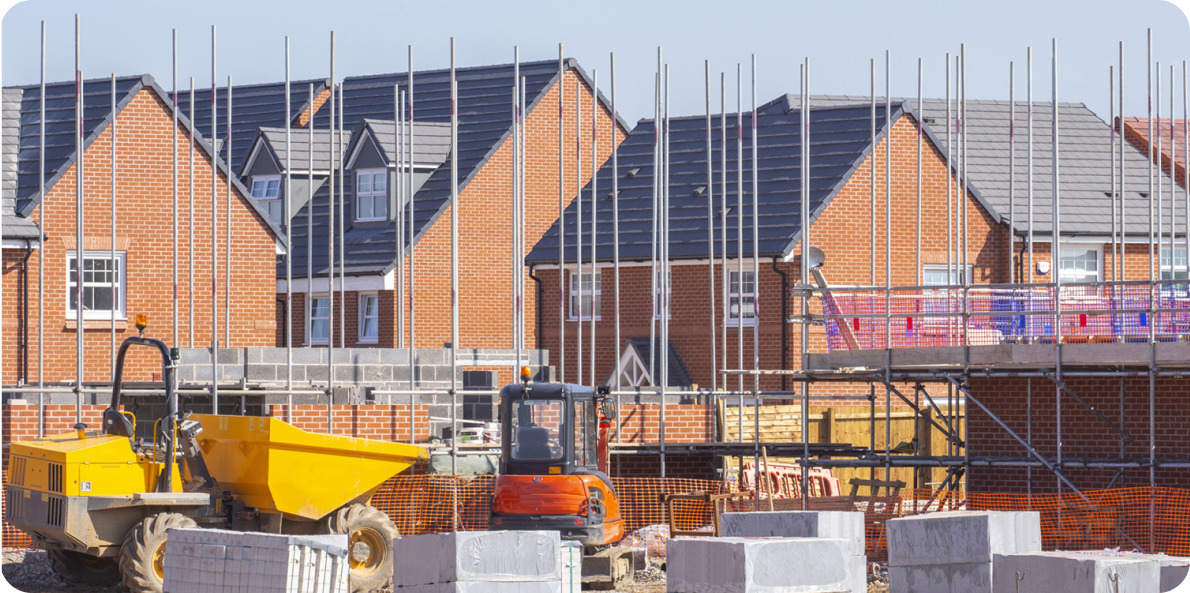The back story
I was at my friend’s place, a lovely new-build home. They were excitedly giving me a tour, showing me all the boxes they’ve yet to unpack, and talking about the highs and lows of the buying process. They also expressed their gratitude for having this home.
During this introduction to the home, I noticed that blue electrical tape was stuck throughout the property. Being the curious person who asks all the questions, I wanted to know what it was all about. My pal said, “These are all the issues that the property developer needs to fix that we've highlighted for them.”
At this point I learned this process is called snagging. A snag is anything that’s an issue within your new home that the developer needs to fix.
Here’s how it works: “I take pictures and send them over e-mail with details about each snag. Then, the property developer tries to arrange a time for a tradesperson to come and fix them. Organising with the property developer, who then needs to liaise with a tradesperson, is really hard work.” I asked if there was not a better way to do this, and they just laughed and wished there was.
Moving home can be a stressful experience. It’s a long path to get there, and when you are there, you want to be done and dusted to settle into your new abode. So why isn’t there a better way to get over this final hurdle? What if there was a simpler way?
Why am I doing this?
I’ve been grateful for having had the opportunity to work on web apps during my product design career, granted these need to be responsive, however, I’ve not been on a project which has been for a mobile app.
I was thinking about what I could design as a side project as an example for a mobile app, I stumbled across a problem. As we know, a product must solve a customer’s problem.
The problem
The overall problem statement could be summed as;
Property developers struggle to efficiently manage post-completion issues in new homes due to fragmented communication channels (emails, calls, PDFs) between homeowners and tradespeople. This leads to reputational risk and unsatisfied customers.

Problem area 1 – Getting snags to the property developer.
- Listing all snags out and letting the property developer know the issues is time-consuming.
- Tracking what I’ve submitted and where it is up to in being arranged to be fixed is a long-winded process.
Problem area 2 – The property developer managing snags from several properties.
- Unstructured data across different channels is complicated to juggle, having to sift this and then plan for which trade to which property is lots of work.
- Keeping track of what snags have been booked in, their status, when they are due to be completed and the homeowner’s satisfaction with the job.
Problem area 3 – The property developer organising for a trades person to fix the snags.
- Being the middle person between a new homeowner and numerous tradespeople is a lot to juggle.
- Getting the homeowners‘ to-date availability and then coordinating trades ‘ schedules is a planning nightmare.
The research and what products exist
After the lovely meal (testing out the local Chinese takeaway), good company, and laughs, I did a quick bit of desk research the following day to see if there was a product or app that solved this problem.
From the perspectives of the new homeowners, property developers, and tradespeople, I started to think there must be an easier way to do this. This development had 110 new homes, and my pal had sent 87 snags to the developer. So, give or take, there would be roughly 10,000 snags across 19 different trades.
There are products aimed at industrial companies (B2B) that an inspector or site manager would use, but nothing exists from a property developer's, homeowner's and tradespersons perspective (B2B2C). Simple apps allow you to take pictures, add copy next to them, and then export to PDF for sending. However, this only addresses part of the overall problem.
Customers are quite unsatisfied, and with the government wanting to build 1.5 million new homes, something might need to change.
Circa 90 snags per home, 110 homes on a development.
An estimated total of 10,000 snags, which could need 19 different trades to fix them.
The goal
If this idea were to become a product, the aims of it would be to:
- Increase new homeowners’ satisfaction with the property developer.
- Increase the brand protection of the developer.
- Reduce phone/email volume.
- Reduce the admin time coordinating between parties.
- Data to hold contractors accountable.
- Timestamp trails for warranty claims.
- Documented proof of issue resolution attempts.
In summary
The management of new home defects needs modernisation to better serve homeowners, developers, and tradespeople.
I’ll be posting more on the progress of this concept shortly. My next steps are to create a service blueprint that outlines what this process could look like and sketches for the homeowner mobile app.
I’m always open to feedback. If you would like to reach out, feel free to drop me a message on LinkedIn.
